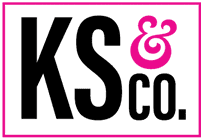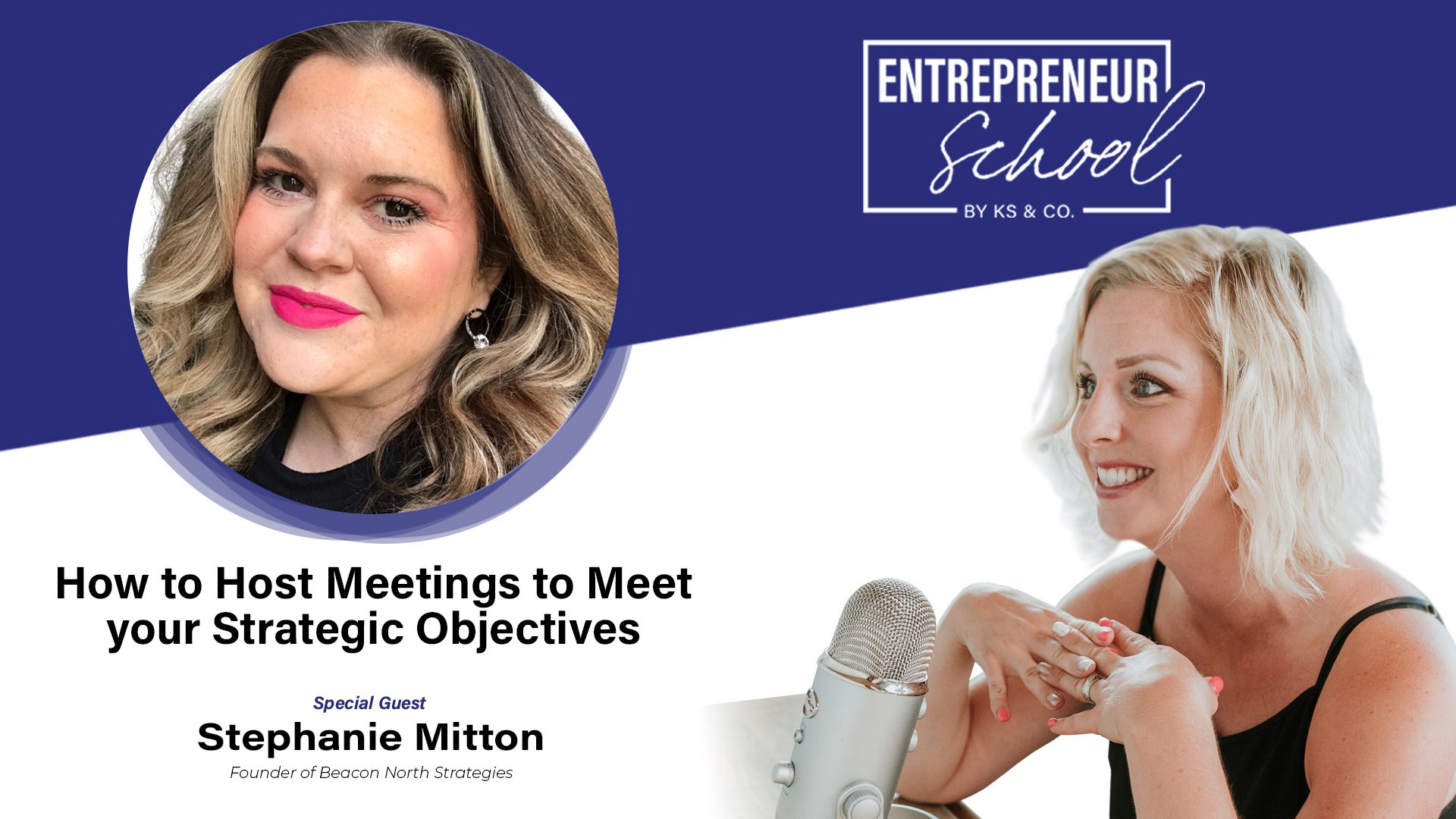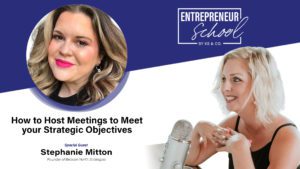Are you looking to take your meeting game to the next level? Stephanie Mitton, principal and founder of Beacon North Strategies, is here to help. Stephanie walks us through the process of preparing for and executing a successful meeting, from setting objectives to crafting key messages. With Stephanie’s guidance, you’ll be sure to make a lasting impression at your next meeting.
Stephanie Mitton is the owner of Beacon North Strategies, a boutique public affairs firm specializing in government relations, stakeholder relations, campaigns, and communications. Stephanie has extensive experience in political campaigning and lobbying and has helped to secure major funding for maternal and child health care in Canada.
Stephanie is passionate about solving problems and helping people. Following years of experience working in politics, she has excelled in the public, private and not-for-profit and charitable sectors. Throughout her career, Stephanie has led numerous successful advocacy campaigns and strategies across a wide range of government departments.
In addition to being the Principal and Founder of Beacon North Strategies, Stephanie is the Principal and Co-Founder of WOMENdontDOthat, a podcast & blog to inspire women to do whatever it is they think they can’t do.
Today, Stephanie joins us to share her expertise on how to host effective meetings that meet your strategic objectives.
Download Stephanie’s presentation.
—
Prepare
Preparing for a meeting is essential to ensuring that the meeting runs smoothly and that you achieve your desired outcome. To prepare, you should first think about what you want to achieve in the meeting and what key messages you want to communicate. It is also important to consider the context of the meeting and whether the objectives you have set are realistic. Once you have considered all these factors, you should create an agenda for the meeting. This agenda should include all the components you want to cover and the order in which you want to cover them. Finally, you should practice pivoting language to keep the meeting focused on your key messages. By following these steps, you will be well-prepared for your meeting and more likely to achieve your desired outcome.
Download Stephanie’s Meeting Preparation Template
What do you want to achieve in the meeting? What is the outcome you want? What would make your meeting successful? Why are you having the meeting, to begin with? And you want to think about just a few things.
You’ll see here that three is maybe ideal, no more than five. And, this might be the stage, where you’re thinking about what you want to achieve that you realize this can just be an email. You don’t need all this detail. Then we think about things like key messages, and we are going to go through an example afterwards as well to make it more real to the work that you’re doing. Key messages should support your objectives.
What do you want to make sure that you stay in a meeting? This is if they only remember three things or five things, what do you want the takeaways to be? What do you want them to remember when the meeting is over? The context is important. You want to be realistic about the objectives and what you want to achieve in your meetings.
And so you can’t expect certain outcomes if the context just doesn’t allow for it. So thinking about what is happening for that person, what is happening for you? Did that company CEO just get fired? Like, thinking about the context is helpful and making sure that the objectives that you want to achieve are realistic. And what do you, your client, your boss, whether it’s you or you’re preparing someone else, need to know that could impact the meeting either during or afterwards?
For example, maybe right before the meeting, the government just shuffled the person that you’re meeting with and they’re not the minister anymore, right? Like, that could happen in a meeting that maybe I would have, for instance, in my works that matters, that whoever I’m prepping the meeting for has that information. The next piece, and we’re going to go into this in quite a bit more detail later today, is the creation of an agenda. And this is where a lot of the strategy in the execution around meetings is going to happen for you. You can frame the meeting, and what components need to be in to walk through the meeting.
For example, you always need a welcome, you always need space to deliver your key messages. And you’ll see this more as we get into an example. You want to time out the framing components of the meeting. You might think that you’re going to talk about a bunch of stuff and then realize, oh, I only have five minutes to deliver my key messages. So maybe that’s two or three things that I have time to say.
You can practice framing and transitioning language to move the agenda along and we’re going to talk about this. And that’s really where a lot of the strategy comes in as well.
Practicing pivoting language to keep focused on your key messages is also important because there will be times when you might be down a rabbit hole on some topics. Bring it back to your key messages. It can also be helpful to think about who is going to talk about what points ahead of time.
But keeping in mind so this is like if there are a few of you in a meeting, right? But you do need to keep in mind that you do need to keep things flexible. And sometimes it makes sense for someone to jump in. Sometimes an agenda needs to be or would benefit from being discussed with the other people that you are meeting with, right? There are times when you’re going to want to chat with the people that you’re meeting with.
Maybe there’s some prep work they need to do or things you want them to read. And so sometimes you will need to do that. Okay, we’re now going to walk through an example of how you might put this into practice. And of course, you need to personalize this for your own needs and your own business. I made up a scenario where we’re meeting with Karen Smith.
Download Stephanie’s Meeting Preparation Example
She’s the VP of Public Affairs at Telus. This is a made-up person who will turn into Kelly. My role is Stephanie Mitton, and I’m going to be the principal and founder of Mitton Speaker Management. I manage speakers, I try and teach them better tools for being a speaker, but also in this scenario, help them get speaking engagements. So this meeting that we’re going to be having is to introduce Karen to Stephanie in Speaker Management as Karen is looking for keynote coaching.
So some of the objectives for this meeting that I would put are to develop a relationship with Karen Smith, introduced VP Smith to my company, explore Karen’s interest in becoming a client, and also learn more about maybe some of the contacts that she could give me to share with future clients. If those are my objectives, then my key messages need to reflect what I want to get out of the meeting. So key messages would be things like, Stephanie Mitton is a sought-after expert in her field and has supported 5% of current Fortune 500 company CEOs to provide keynote speeches to hundreds of thousands of potential customers that were a boutique firm where they can get hands-on experience from senior coaches, and that, as clients have said to us, more support for their money. I would also talk about our clear track record for success, for instance. These are all different things.
They’re going to back up those objectives. Mitton Speaker Management would like to work with Karen to increase her brand through thought leadership globally, which in turn will increase the revenue and the customers for Telus. So, the context that’s important to know is that Karen is in line to become the CEO of Telus. And so, of course, I want them as a client, because having the CEO of Telus would be awesome. Karen has worked with coaching experts in the past, but her revenue has not increased.
So that’s where the points about how I have proof points about clients reaching and increasing their speaking opportunities is important. And then you’ll see I’ve drafted out a bit of an agenda, and it’s 30 minutes long. In the work that I do, I would rarely get to meet with somebody for more than 30 minutes. Almost all our meetings are 30 minutes.
Whether you’re meeting with the Prime Minister, meeting with one of his staff, meeting a minister, or meeting a senator, you won’t get longer than 30 minutes. There is the odd meeting at the civil service level, which sometimes I do meet with, where you’ll get an hour, and often I find I don’t need the time. If you’re having a discussion where you’re solving something together, you’re developing something together, you want to dive in on a topic and have a discussion, then I think that’s where a longer term, like a meeting, is helpful. But if you’re just doing introductions or there are just a few objectives you want to share back and forth with each other, you can successfully do that within 30 minutes. So in this meeting, we would want to have some small talk, not too much, and that sort of reading body language can become helpful.
And we’re going to talk about that a little bit later, of course, introductions about who you are and more about your company, reasons for the meeting, why you wanted to meet with them, maybe, and walk them through the agenda. You can also gather information about her priorities so that when I speak more about my company and what I do, I can hear more from Karen to frame that language and then again have her react to what I’ve shared because I want to know what she thinks about that. Is she likely to work with us, that kind of a thing? And then for closing remarks, you want to reinforce any specific messages, review the next steps, and thank them for their time. So that’s kind of the basic format that I would use if I was meeting with a different type of audience.
So, for instance, in the work that I do as a lobbyist, I would first deliver some of my key messages and then try and gather their reaction and their priorities. You just set out the agenda for really what you want to achieve.
Approach
When preparing for a meeting, it is important to think about what you want to achieve and what key messages you want to communicate. You also need to consider the context of the meeting and what the other attendees might need to know. Creating an agenda is a key part of preparing for a meeting, as it will help you keep focused on your key messages and ensure that everyone knows what is supposed to be discussed. Practicing your framing and transitioning language ahead of time can also help keep the meeting on track.
If you are the one leading the meeting, it is also important to think about how you want to structure it. This includes deciding whether you want to start with a brief icebreaker or jump right into the main discussion. It is also important to decide how you want to handle any side conversations that might come up. Having a plan for how you want to handle these things ahead of time will help ensure that the meeting stays on track and that everyone leaves feeling like they accomplished something.
Some tips are to structure your meeting like a conversation. I will pause for a second and say that when we go through tips, they seem like a lot. And what I would recommend is if you pick one or two to work on at a time, then maybe you pick one and you have a few meetings and your practice, and then you get good at that one and then you add another one. If you try and add all of these at once, it will become too much. Because one of the benefits I feel for me from doing a lot of these for so many years is that as much as what I’m preparing ahead of time, what I’m delivering is somewhat scripted and structured.
I don’t deliver it like it is. The person does not know that I have done all of that and does not feel like I have, or I would not be good at my job. And so that takes time and it takes practice. So again, structure your meeting like a conversation. Try to keep them conversational rather than transactional.
Turn off any distractions. That’s something that will help you ensure you leave enough time to hear from attendees in the meeting. I think this is important and depending on what your objectives are, is probably one of the most important things about meetings at the end of the day, what’s beneficial is to hear from them, especially if you’re gathering information. Yes, you want to share some stuff, but at the end of the day, in my work, hearing other people’s feedback on that or hearing what’s important to them will help me long term achieve what I want to achieve, which is working with them to have them do something that I want them to do. Leave a positive impression.
So much about meetings, networking is about relationships and leaving a positive impression. If all they remember is that they had a positive meeting with you and they like you as a person, that’s huge. Don’t use Jargon. Depending on what your industry is and the language maybe you use within your company, you need to make sure that you’re not using that with external stakeholders because you’ll lose them. They won’t know what you’re talking about.
Try and use language like if you were talking to your best friend’s mom and you were explaining what you did for work, that’s the type of language that you should be using when you’re meeting with external stakeholders, unless you’re meeting with a technical expert who, you know, already understands that language, keep meetings to their scheduled times. I think this is so important, especially, because I know for my industry, I always make sure I end on time because I want that person to meet me in the future. If they say they only have 30 minutes, I’m going to keep it to 30 minutes. I do think there’s an asterisk there, which is that if you’re meeting with somebody who it’s an important meeting to you, you could book some extra time afterwards to give yourself some buffer in case that person wants to stay on longer and go over. But to do that, I would either allow the other person to tell me that they want to stay longer, or you can signal check and say, we’re having a great discussion.
Do you want to keep chatting about this or do you need to end at 3:30 or whatever? Generally, to ensure you get a future meeting, I would keep it to your schedule of time. Stay focused on your key messages and practice Pivot lines to help you return to those messages. And we’re going to talk about that today, too. Don’t confuse attendees by being too detailed, too.
If you go down into the weeds on something and you feel like someone’s glazing over or they’re looking at your phone, you need to start talking more high level again. Don’t be afraid to ask questions. I think that’s something you don’t do enough. If you want to know something, you can just ask. You can politely ask direct and pointed questions.
I think that’s something about my advocacy approach that’s maybe a little bit different, and that works well for me.
We must speak with authority and integrity. You know what you’re talking about. You know what you want to get across. And I think a key thing here is if they ask you something and you don’t know the answer, it’s completely appropriate to say something like, I’m not sure, let me look into that and get back to you.
It will never benefit you to just make something up or say something you’re not sure about and they’ll respect you more for that. I have a puppy here. As I mentioned earlier, building a relationship is important. And that piece about it’s about them. And that comes back to wanting to make sure that you hear from them.
It depends on what your objectives are. But in so much of my work, it’s really about the other person and making sure that I hear from them and have a positive relationship with them. Some small talk is good, maybe not too much. And again, that’s where you can read body language. I’ve met people that kind of love to chitchat at the beginning and then like to dive into things.
And then I’ve also met with people who are very serious policy advisors and don’t like to waste their time and they just want to get to the point. And in that case, you better just get to your point.
Delivery
The third step in the process is to deliver your key messages. This involves being clear and concise about what you want to achieve in the meeting and staying focused on your main objectives. It is also important to practice framing and transitioning language to keep the meeting on track and focused on your key messages. This step is vital in ensuring that you meet your strategic objectives and that the meeting is successful.
Once you have your key messages prepared, it’s time to deliver them in the meeting. This step is all about being clear and concise and staying focused on your objectives. It is also important to use language that will keep the meeting on track and focused on your key messages. This step is vital in ensuring that you meet your strategic objectives and that the meeting is successful. If you’re not sure how to frame or transition your key messages, practice beforehand so you can deliver them confidently in the meeting. With a little preparation, you can ensure that your meeting is successful and that you achieve your strategic objectives.
Okay, so next we’re going to chat about the delivery piece. So this is really where we bring the two pieces together that we’ve already talked about preparing an approach and we’re going to talk about some of that framing language. And so this is where I talk about how you really can walk people through an entire meeting by using some of this language and taking them where you want to go. And this is the type of thing that over time you would want to practice. So you could say things like, these are just some examples.
Why don’t I walk through the agenda, and then we can jump in asking questions? Does that work for you? I would love to hear your thoughts on what I’ve shared, and then we can turn to what your priorities are for the next quarter. You are telling them; this is what we’re going to talk about.
This is what we’re going to do next and lead them where you want them to go. You’re using some framing language to walk through the entire meeting, and we are going to go through an example of that that will help put it in a better perspective.
Sometimes there’s a polite way to kind of make that transition. And you’ll see whether you call it framing language, bridging language, or pivoting language, you can see lots of examples online in media relations. Training is some of that language that they teach you, you can just use it in regular old meetings as well. You could say things like, I think the three main things to focus are on X. Maybe they’re seeing something and it’s getting you off-topic.
So those are some of the examples of the type of language that you can use and practice, and over time, that gets easier. And I think that is the piece that allows you to walk seamlessly through your agenda and lead the person where you want to go in that meeting.
For practice, we already talked a lot about how valuable it is to practice this and not get overwhelmed by doing too much.
[Stepanie] Hi, Karen. Thank you so much for meeting with me today. Thanks.
I’m glad you’re here. I appreciate you taking the time. I know this period is a busy time for you folks that tell us yes. I don’t know whether I’m coming or going right now. I can relate to that.
I thought today we could do some introductions and talk a little bit about our agenda. I’d like to hear some of the things that you’ve been thinking about in terms of your speaking, and I can share a little bit about how I think I can help you, and we can discuss that a bit and then close things off. Does that work for you?
[Karen] Yeah, that sounds perfect. Great.
[Stepanie] Well, as you already know, I’m Stephanie Mitton, and I’ve worked with several Fortune 500 companies. I’m excited to meet with you today. I worked a few years ago with your previous CEO, and so it’s great to be chatting with you again today. We’ve already gone through the agenda, and I know that you’re looking to have somebody take your speaking to the next level. And can you tell me a little bit more about what you’re hoping to get out of your speaking, and then I can talk more about how I can help you?
[Karen] I enjoy speaking. I find it’s one of the most effective ways to reach more people at a time with our messages.
You know what? I’ll be honest with you, Stephanie.
As a woman in leadership. It’s really important to me to be able to be a mentor. Be able to be a role model. Be able to sort of breakthrough that glass ceiling and inspire other people. Other women.
Into doing into taking on roles like this and being able to care. Speaking about the actual work that we do here at Telus alongside the journey of. You know. Becoming a woman in leadership. That’s what I want to be able to get out as a message.
And it’s an important thing for me to think about my legacy in the field and my career and all that wrapping up, and that’s really where I’d like to take this.
[Stepanie] Well, Karen, that’s wonderful to hear. I think that’s so important and something we need to see more female leaders doing and certainly something we can support you with. We can chat about it another time, but we also have a podcast at my company, which is the audience is young women from 25 to 35. And I think it would be great to have you on.
The listenership is 10,000 people a month, and I think it would be great for them to hear your voice, so you can chat about that afterwards as well. I want to talk about how we can support your efforts. I think one thing that’s important for you to know is that you get hands-on experience from a senior person. When you work with us, you either get somebody like me who’s been in the industry for 20 years or somebody of equivalent level, and that is something that you will see differently than when you work with other firms and also that we commit to increasing your speaking revenue by 50% in six months. We’ve been in business for 20 years, and we have never had to give the next couple of months free, which is our guarantee.
And I love hearing about how you want to talk about your branding and looking at increasing your thought leadership around that as you continue to grow in your career. We have a woman who works with us who specializes in that work and has been able to get women at some pretty big speaking engagements internationally. And so that’s something we can also include in our follow-up. I’d love to hear any feedback you have before we close things off today. Yeah, so my time is somewhat limited, so in terms of actually getting out and speaking, I don’t want to be on the road three weeks a month.
I would look to you for recommendations on the top stages, to be on the top events, to be part of and to give some strong consideration and advice and counsel around what’s going to be the most effective. And obviously, also be able to I’d like to be able to review the proposal for speaker fees and what’s all included and everything and evaluate all of those scenarios individually, but in a nice, compact way. Yeah, that’s great. Maybe what I can do as I pull the proposal together, I can add some of those details. I’ll keep it short given your feedback.
That’s helpful. And I can give you a bit of a menu of options in terms of how we can support you so that maybe a mid-level range that keeps you maybe not as busy but gives you some significant exposure. And then if you decide that you would like to do more, I can share that option with you as well. So for the next steps, I’ll pull that together for you, and I can prepare that for you by the end of the week. Does that work for you?
[Karen] Sounds great. Okay.
[Stepanie] Thanks so much, Karen. I will follow up with that, and I’ll also send you the details of the podcast. Excellent.
[Karen] Yes, your podcast sounds wonderful. Great. Okay, thank you so much.
I love that example. It was just a nicely flowing sales conversation. Yeah. And I think, as I said before, the more that you practice it, it will feel less was pivoting example brad saying it’s less forced or something?
I think that one of the things that I think about often in my work is strong networking, interpersonal skills are important, and I think genuinely, really want to work to know more about people and have an interest, if you can find that within yourself, will make a difference in the work that you do. For me, it comes very naturally. And I know for meeting with stakeholders, that’s something that stands out and does make a difference.
For more on this topic and perspective, check out Stephanie’s website or follow Stephanie on her Podcast: WOMENdontDOthat.
Head over to our Freebies page to access Stephanie’s 10 tips to make your next meeting a success.
—
Follow Stephanie on Instagram
Connect with Stephanie on LinkedIn
Follow Stephanie’s Podcast – WOMENdontDOthat on Instagram







